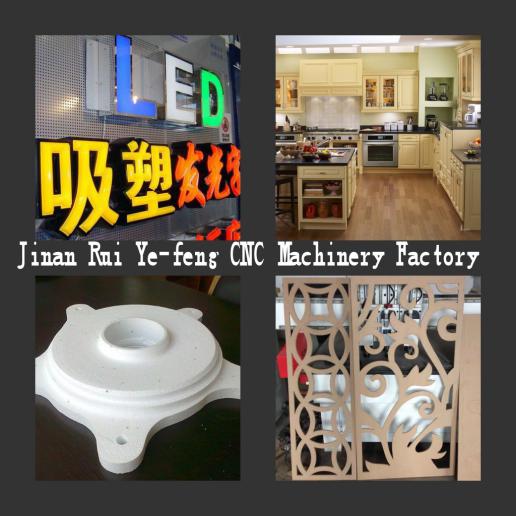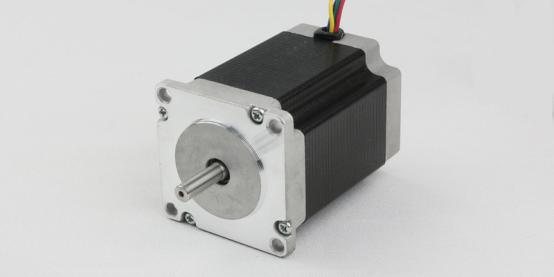Buyer's Guide
CNC routers play a significant role in markets such as furniture design, circuit board manufacturing, plastic and foam fabrication, and education. They can allow you to complete projects in a few hours that used to take several days.

CNC machines today, use a complex system of computers and controllers combined with controller software to guide the router. Using this method to control the machine,you have the ability to produce a near perfect product.

Of course, you have already considered this, which is why you are looking to buy one. However if you are like many, as you search for information you only find hundreds of models and manufacturers. Which probably got you asking, "Which one is the right one for me?"
Buying can be a daunting task, to say the least. This is where the Buyers Guide comes in handy. It will walk you through all the decisions you need to make in order to narrow your choices.
We'll look at prices, types, considerations and many other aspect regarding CNC routers that will help you, the buyer, make an informed decision before you purchase.
The following answers will take you though the steps of buying a CNC router.
Buyers guide Step 1: "Is this the right machine for my application?"
Keep in mind following are very basic questions.
1)What type of materials do you plan to cut?
For example, if your answer was steel, I can almost assure you that there may be alternative machines that will meet your needs. Such as CNC Water jets, plasma cutters, or lasers, which is another topic. Routers are usually associated with carpentry, which is why CNC routers are usually associated with woodworking only. However, there are many other materials that can be cut.
So, if your answer to question one was any of the following:
Wood
Particle Board
Plastic
Foam
Composites
Glass
Aluminum*
Then it is safe to assume that a router could still be the machine for you. So lets continue to question two.
2)What is the most complex design you foresee cutting?
Do you plan to use the machine for cutting, carving, drilling, or all of the above? Most CNC Routers are only equipped for 2.5-D cuts. Which is to say they are limited in one dimension as to how far they can cut without disrupting other surfaces. Imagine a sphere protruding out of a board.
A standard 3 axis machine would not able to cut that piece if the sphere protruded any further than halfway. However, there are multi-axis CNC machines which we will get into later.
CNC routers are great for larger cut and for small.

3)What kind of tolerances do you need to hold?
If you are not a company and are simply looking for a versatile machine that can meet your needs, you can hardly go wrong with these machines.
Even if you are a hobbyist or small business, it will be hard to find alternative machines with the capabilities and versatility of CNC routers within the same price range.
Step 2:how many axes do you need?
In general, there are three levels of CNC woodworking machines you can purchase depending on the number of axes needed to do the work you have in mind.
3-axis: The most common CNC routers, the standard 3-axis router features an eight-foot long X axis, a four-foot Y axis, and a six-inch Z axis.
4-axis: The addition of a fourth axis allows material to be rotated around the vertical axis or on a CNC lathe for architectural mill work or advanced artistic carvings.
5-axis: Offers two additional axes for rotating parts and cutting three-dimensional objects without having to reposition them. Can machine five sides of a cube at once.
Step 3: Choosing the right type
You have two options for the motors that will power your router:
stepper or servo.
1> A stepper motor moves in steps and keeps count of the steps to determine its position. This is an open loop control, meaning that after controller tells the motor to move a certain number of steps, it assumes that it's done. You don't get feedback letting you know where the motor is, and in complex designs, this can lead to errors.

2> instead of counting steps, brushless servo motors send feedback to the computer to keep track of their position. This is a closed loop control: feedback from an encoder lets the motor automatically correct its location. By self-correcting, you get faster point-to-point speeds and increased power.

Drive systems
The motors are connected to one of three different drive systems to drive the machine's axes:
1> Ball screw: Large screw drives with ball bearings that run around the gantry.

2> Rack and pinion: Straight/helical gear drives.

Vacuum system
A vacuum system uses suction to hold down the material you're machining so you don't have to hold it in place by hand. It also leaves your hands free to feed the next sheet of material into the machine.

Spindles
CNC routers can have either manual single-cutter spindles or automatic tool changing capabilities. This means you can either perform a cut, stop the process, and change the bit by hand, or use a spindle that actually picks up a bit, makes a cut, and switches to a new bit.

Router bits
CNC router bits are sold in groups with different sized cutters to handle various materials. They must be kept sharp at all times to ensure accuracy.

Step 4: Pricing and other expenses
Cost is obviously a huge factor in your decision and it's only natural that you want the best deal. Just make sure the price isn't the only thing you're concerned with. You need to consider your total cost of ownership.
A less expensive model might save you money initially, but if it doesn't provide enough speed or capacity for your future needs, you may need an expensive upgrade down the line. You also need to consider what short-term and long-term benefits the unit can provide, such as reducing your operating expenses and labor costs.
Pricing in the CNC router industry is tiered according to how much the router can do.
1> Low-end ($3,000-$6,000) -- A basic 3-axis CNC router with a 4' x 8' base and 6-inch Z-axis can start around $5,000.
2> Mid-range ($6,000-$20,000) -- Mid-range CNC routers are heavier machines
Used in a wide variety of applications. They typically include steel frames and other features to improve performance.
Highest ($20,000 and up) -- The highest prices are for the largest, fastest 4-axis and 5-axis routers. These top-end machines are customized for large plants with heavy-duty machinery needs. A fully loaded router with a vacuum table, pump, attached computer terminal, automatic tool changer, and additional accessories can cost upwards of $100,000.
Step 5: shipping and transport
Shipping a heavy CNC router carries a considerable cost. With router package size varies from several square to more than a dozen square, freight costs can range from $60 - $2,000 or more, depending on your location.
